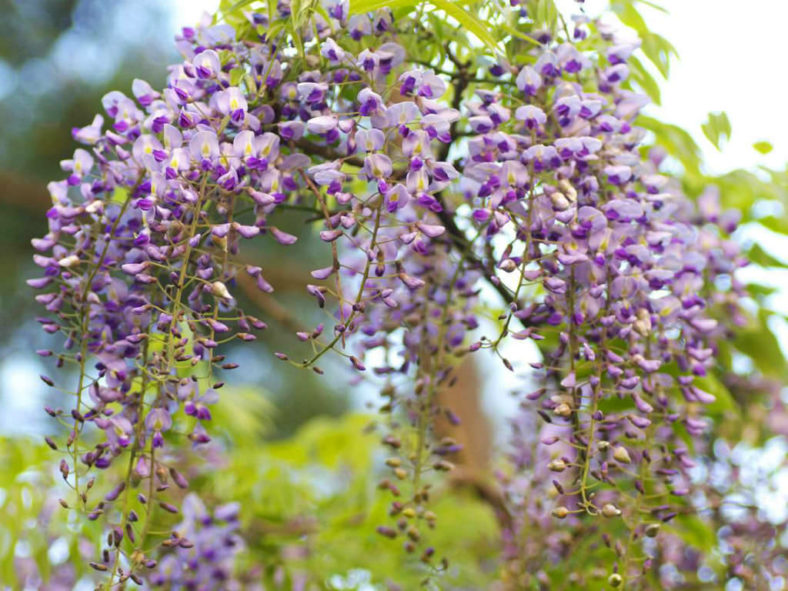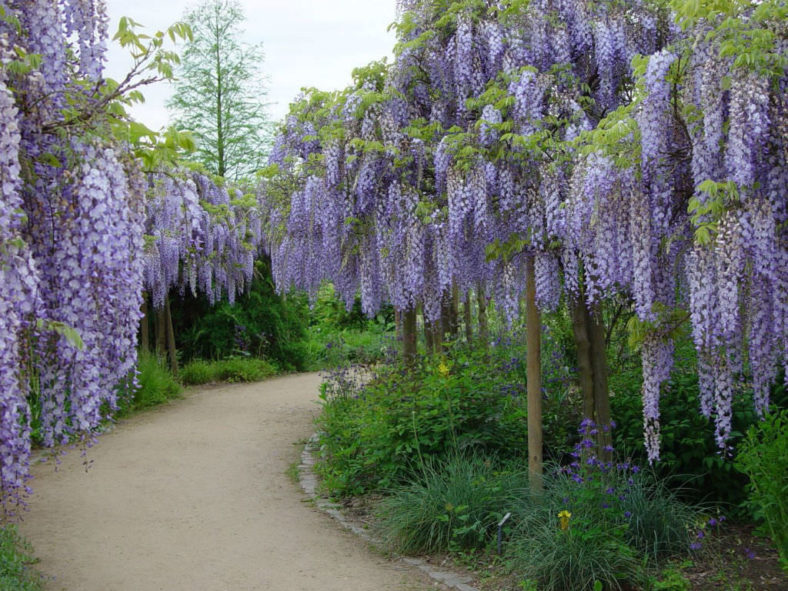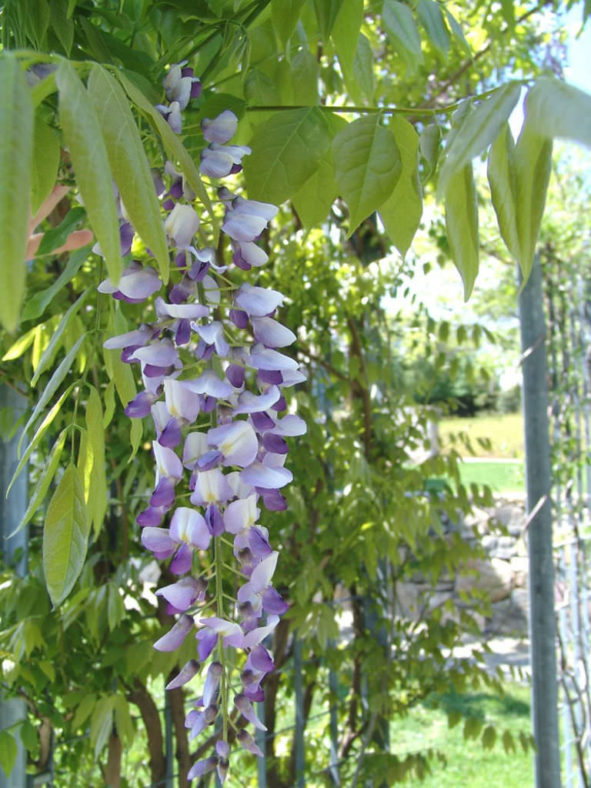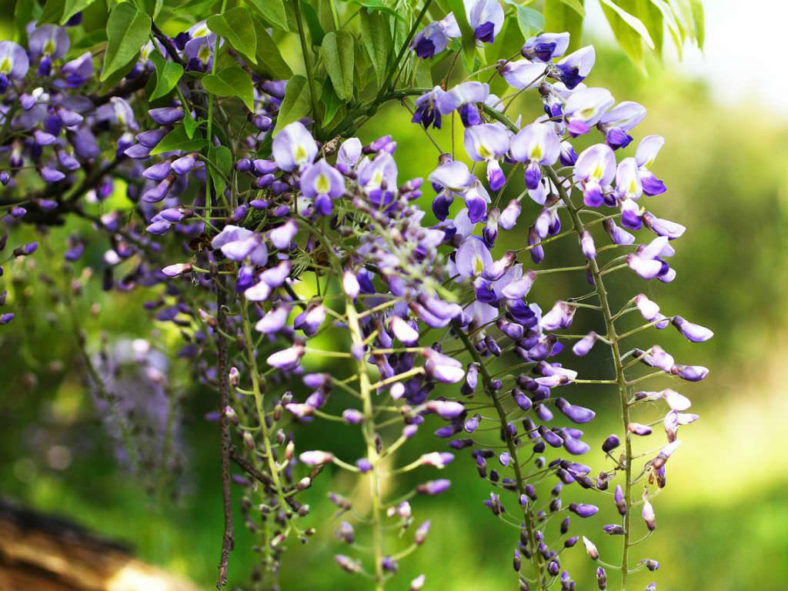Scientific Name
Wisteria floribunda (Willd.) DC.
Common Name(s)
Japanese Wisteria
Synonym(s)
Dolichos japonicus, Glycine floribunda, Kraunhia floribunda, Millettia floribunda, Phaseolodes floribundum, Rehsonia floribunda, Wisteria multijuga
Scientific Classification
Family: Fabaceae
Subfamily: Faboideae
Tribe: Millettieae
Genus: Wisteria
Origin
Wisteria floribunda is native to Japan.
Flower
Color: White, pink, violet, or blue
Bloom Time: Early to mid-spring
Description
Wisteria floribunda is a woody deciduous twining climber that can grow up to 30 feet (10 m) long over many supports via powerful clockwise twining stems. The foliage consists of shiny, dark-green, pinnately compound, up to 12 inches (30 cm) long leaves that bear 9 to 13 oblong leaflets, each up to 2.4 inches (6 cm) long. The plant also bears numerous brown, velvety, bean-like, up to 4 inches (10 cm) long seed pods that mature in summer and persist until winter.
The flowering habit is perhaps the most spectacular of the Wisteria family. It sports the longest flower racemes of any Wisteria. They can reach up to 20 inches (50 cm) in length. These racemes burst into great trails of clustered white, pink, violet, or blue flowers from early to mid-spring.

Hardiness
USDA hardiness zone 5a to 9b: from −20 °F (−28.9 °C) to 30 °F (−1.1 °C).
How to Grow and Care
When growing Wisteria, the most important factor to consider is the location. Wisteria is a twining vine that requires sturdy support and regular pruning to keep it under control. Open areas surrounded by lawns that can be easily mowed are ideal for growing Wisteria.
Wisteria doesn't fair well in the cold, so make sure it receives plenty of sunlight. This vine requires deep, fertile soil that is somewhat moist but will tolerate many soil conditions.
Once planted, pruning is about the only important requirement for Wisteria vine care. Since this vine is an aggressive grower, there's no need for fertilizing, and being drought tolerant, Wisteria requires little watering.
While Wisteria is great for covering an arbor or pergola, training Wisteria vines makes it easier to control. Keep in mind, when training Wisteria vines, the variety may exhibit different twining characteristics. For example, Chinese Wisteria (Wisteria sinensis) twines counterclockwise, while the Japanese variety (Wisteria floribunda) is the opposite, twining clockwise.
See more at How to Grow and Care for Wisteria
Links
- Back to genus Wisteria
- Plantpedia: Browse flowering plants by Scientific Name, Common Name, Genus, Family, USDA Hardiness Zone, or Origin
Photo Gallery
Click on a photo to see a larger version.




